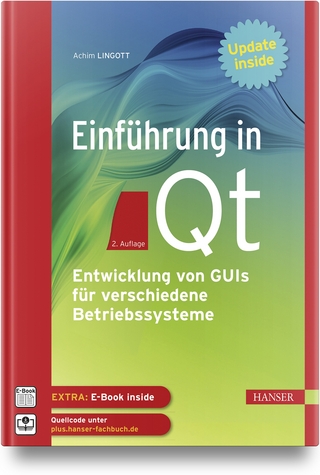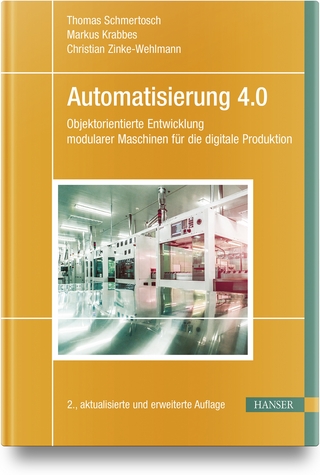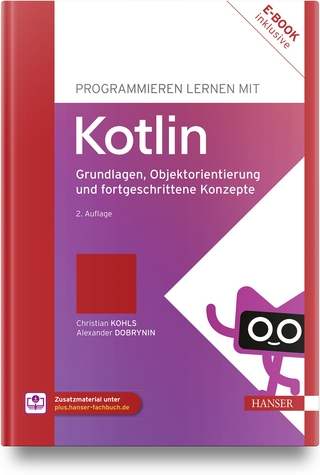
The Interpretation of Object-Oriented Programming Languages
Springer London Ltd (Verlag)
978-1-85233-547-2 (ISBN)
1. Introduction.- 1.1 Introduction.- 1.2 Essential Properties of Objects.- 1.3 Objects and Messages.- 1.4 Pure and Impure Languages.- 1.5 Mixed-Paradigm Languages.- 1.6 Organization of this Book.- 2. Class Fundamentals.- 2.1 Introduction.- 2.2 Classes.- 2.3 Instances.- 2.4 Slots and Methods.- 2.5 Slot Access.- 2.6 Visibility and Accessibility.- 2.7 Instance Creation.- 2.8 Inheritance.- 2.9 Abstract Classes.- 2.10 Iterators.- 2.11 Part Objects.- 3. Prototype and Actor Languages.- 3.1 Introduction.- 3.2 Prototype Languages.- 3.3 Methods in Prototype Languages.- 3.4 Actor Languages.- 4. Inheritance and Delegation.- 4.1 Introduction.- 4.2 Interpretations of Inheritance.- 4.3 Inheritance as Subtyping.- 4.4 Inheritance as Code Sharing.- 4.5 Single Inheritance.- 4.6 Calling More Abstract Methods.- 4.7 Multiple Inheritance.- 4.8 Multiple Inheritance Graph Shape.- 4.9 Approaches to Multiple Inheritance.- 4.10 Implemented Multiple Inheritance Techniques.- 4.11 Mixin Classes.- 4.12 Alternatives to Multiple Inheritance.- 4.13 Delegation and Prototypes.- 4.14 Aggregation.- 5. Methods.- 5.1 Introduction.- 5.2 Methods and Objects.- 5.3 Object Constructors and Methods.- 5.4 Environments and Closures.- 5.5 Methods and Inheritance.- 5.6 Static and Dynamic Binding.- 6. Types I: Types and Objects.- 6.1 Introduction.- 6.2 Inheritance and Types.- 6.3 Polymorphism.- 6.4 Genericity.- 6.5 Overloading and Overriding.- 6.6 Languages with Root Classes.- 6.7 Polyadicity and Default Parameters.- 6.8 Downcasting and Subtypes.- 6.9 Review.- 7. Types II: Types and Objects—Alternatives.- 7.1 Introduction.- 7.2 Types and Implementations.- 7.3 Hiding Implementation Details.- 7.4 Classes and Type Operations.- 7.5 Containers and Objects.- 8. Reflection.- 8.1 Introduction.- 8.2 Class and Meta Class.- 8.3Meta Class and Reflection.- 8.4 Meta-Object Protocols.- 8.5 Self Representation, Abstract Syntax and Abstract Classes...- 8.6 Reflection in Java.- 8.7 Reflection in Prototype-based Languages.- 8.8 Prospects for the Future.- 9. C#.- 9.1 Introduction.- 9.2 Classes and Instances.- 9.3 Inheritance.- 9.4 Methods and Operators.- 9.5 Polymorphism and Types.- 9.6 Base Class Library.- A. BeCecil.- A.1 Programming Standard 00 Mechanisms.- A.2 Syntactic Sugar.- A.3 A Small Example.- A.4 Concluding Remarks.- B. Mixed-Paradigm Languages.- B.1 Introduction.- B.2 Functional Programming: An Overview.- B.2.1 Control Structures and Semantics.- B.2.2 Evaluation Strategies.- B.2.3 Higher-Order Functions.- B.2.4 Hindley-Milner Type Inference.- B.2.5 Syntactic Sugar.- B.3 An Impure Language.- B.3.1 The Object-Oriented Component.- B.3.2 The Functional Component.- B.4 Review.- References.
| Erscheint lt. Verlag | 10.10.2001 |
|---|---|
| Zusatzinfo | XIV, 290 p. |
| Verlagsort | England |
| Sprache | englisch |
| Maße | 155 x 235 mm |
| Themenwelt | Mathematik / Informatik ► Informatik ► Programmiersprachen / -werkzeuge |
| Informatik ► Software Entwicklung ► Objektorientierung | |
| Informatik ► Theorie / Studium ► Compilerbau | |
| Schlagworte | Object-Orientation • Programming Languages |
| ISBN-10 | 1-85233-547-5 / 1852335475 |
| ISBN-13 | 978-1-85233-547-2 / 9781852335472 |
| Zustand | Neuware |
| Haben Sie eine Frage zum Produkt? |
aus dem Bereich


